.Looking back at some of our travels, I found this gem that was never published. As we move into winter, I thought it would be nice to take a look at what we. have to look forward to when all the cold leaves and we have warm weather again. In June, several years ago, it was time to get away and see a garden or two. At the time we were staying with our son in Northern Virginia and we decided to visit Longwood Gardens just under 3 hours away in Eastern Pennsylvania.
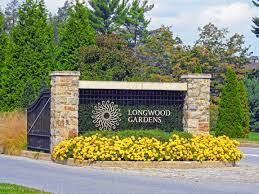
This is a botanical garden that consists of over 1,077 acres of gardens, woodlands and meadows. It is considered to be one of the premier horticultural display gardens in the US and a place we have visited previously – but not for a very long time.
Longwood Gardens has a long and varied history. For thousands of years, the native Lenni Lenape tribe fished its streams, hunted its forests, and planted its fields. Evidence of the tribe’s existence is found in quartz spear points that have been discovered on and around the property and can be found on display in the Peirce-du Pont House on the Longwood Gardens property.
In 1700, a Quaker farmer named George Peirce purchased 402 acres of this English-claimed land from William Penn’s commissioners. George’s son Joshua cleared and farmed the land and in 1730 he built the brick farmhouse that, enlarged, still stands today. In 1798, Joshua’s twin grandsons Samuel and Joshua, who had inherited the farm, actively pursued an interest in natural history and began planting an arboretum that eventually covered 15 acres. The collection included specimens that they collected from the wild as well as plants acquired from some of the region’s leading botanists.
As the 19th century rolled into the 20th, the family’s heirs lost interest in the property and allowed the arboretum to deteriorate. The farm passed out of the family through several hands in quick succession, and a lumber mill operator was about to cut down the trees for timber in early 1906. This threat moved Pierre S. du Pont, American entrepreneur, businessman, philanthropist, and member of the prominent du Pont family to take action. On July 20, 1906, 36-year-old du Pont purchased the farm primarily to preserve the trees. He wasn’t planning to create Longwood Gardens, but within a few years, his desire to make it a place where he could entertain his friends transformed a simple country farm into one of the country’s leading horticultural display gardens. The end result is a beautiful set of gardens, green houses, water features, walking trails and space to relax.
We arrived late morning and were able to see the Water display

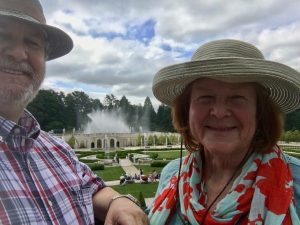
near the main Conservatory area before going on tour of Pierre’s “mansion expansion”. While the Biltmore’s, Huntington, and other early 20th century millionaires built mansions to rival those they saw in Europe, Pierre du Pont brought back the drawings, engineering and vision of a conservatory to entertain in, and gardens as outdoor living space from Italy and France.
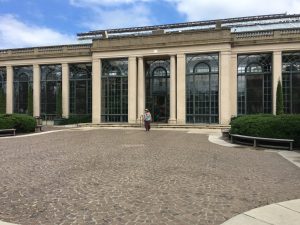

On a previous winter visit, we were enthralled by the poinsettia “chandeliers”
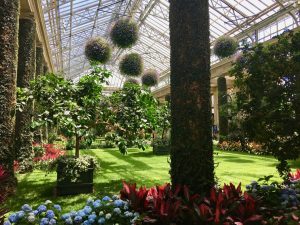
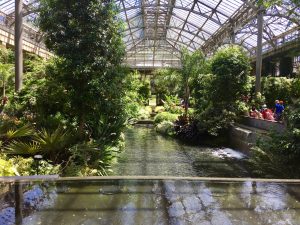
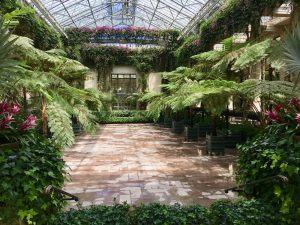
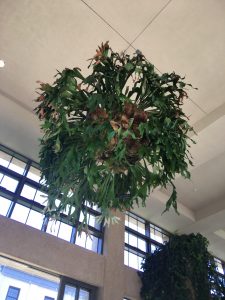
and tropical warmth of Longwood’s rooms of orchids and Mediterranean plants. In summer, now, one can marvel at the lotus and water lily display.
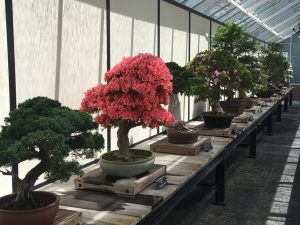
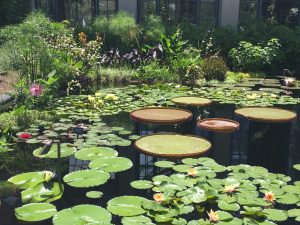
The fountain gardens, originally designed in the 1930s,in 2014 were completely removed, reimagined, and reinstalled over huge tunnels that power a spectacular water show with jets shooting into the air and streams of water dancing to programed music, with lights on summer nights. This opened May 2017.
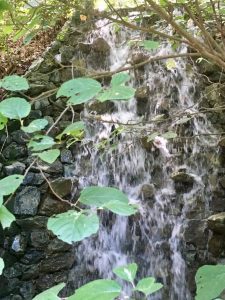
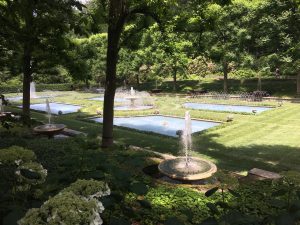
The Italian Water Gardens inspired by the Villa Gamberaia,
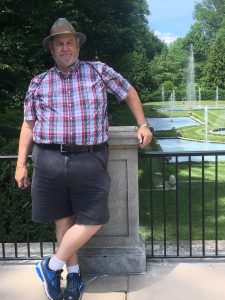

reflect a mixture of the formal fountains and pools of the Versailles vision, connected to English Garden waterfalls and “natural” jumble of meadow and woodland paths. En route is a children’s delight tree house overlooking the native plants meadow.
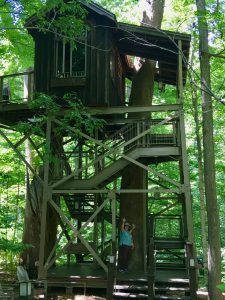
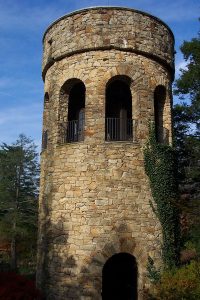
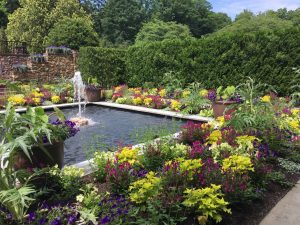
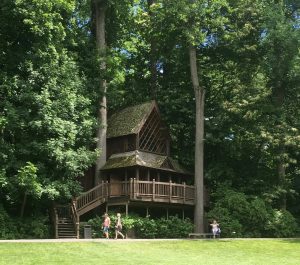
Circling back to the entrance after pausing for refreshment, we rested in the rose arbors with the flower garden walk overlooking our Solstice Garden visit.
By the mid-1930s, Longwood had grown from the original 202 acres to 926 due to Pierre’s purchase of 25 contiguous properties over the years. In addition to horticulture, agriculture had always been important at Longwood, which started out, after all, as a farm.
In 1954, just three days after being awarded the Cravate de Commandeur of the French Legion of Honor, Pierre died at 84 years old. With his usual foresight, Pierre had in place a well-funded yet adaptable mechanism for Longwood to continue.
Already one of the world’s premier horticultural display gardens, Longwood continued to improve its growing practices and add new and inspired garden designs during this time period.
The future of Longwood is both bright and challenging, inspired by a redefined vision built on that conceived by Pierre S. du Pont. Recent growth of programs, attendance, budget, and accomplishments have pushed Longwood to the forefront of American cultural institutions.
If you haven’t been, or even if you have, a visit to Longwood Gardens is always a treat.